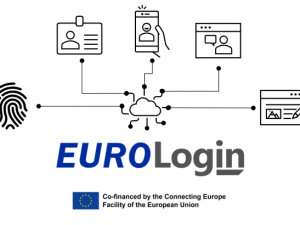
July 2nd, 2019
Recently the CEF Digital website published the article: “How can Identity Matching improve the experience of citizens on online public services?”, in which exposes the main challenges to face on electronic identification.
European public administrations have established platforms with high quality and very efficient services, however, these systems have been developed independently, but difficulting the real connection amongst their databases and sharing the information. For example, this is really complicated for a public administration when it comes to match the identity of a citizen in its database to its record in another database, especially when this process involves two or more countries.
As the years go by, globalization and the flow of citizens have made necessary that the growing electronic information associated to them got linked through different systems and countries. These links between the different databases used in the 28 countries of the European Union need to improve as citizens identification is often impossible because the following problems identified in the article:
- Mistakes based on linguistics: The transliteration from different alphabets that imply different equivalences for the same name make very difficult to match the identity of a person in two databases. For example, in Arabic the name محمد can be translated in Latin in many different ways, like Muhamad, Mahomet o Mohamad. To resolve this, the experts are working on improved and exhaustive dictionaries to reflect the most frequent variants for every name.
- False positives: This means eliminating or at least cutting down the risk of matching two identities of two different people. Algorithms used in the past few years to find phonetic or spelling similarities in names have failed to produce correct identities connection. The current trend to avoid false positives is to implement artificial intelligence techniques and machine-learning algorithms.
- Missing data: Also misuse of second names, maiden/married last names, etc. in databases can make that the same person is not represented under the same identity data. European countries need to find a common approach to face these usual situations.
In this sense, the eID4Spain project, in which we are beneficiaries, seeks that the four participant public administrations connect their systems to the Spanish eIDAS node through Cl@ve 2.0 to be fully compliant with the eIDAS Regulation, and managing to eliminate the aforementioned problems.
In Spain, one of the most visited countries in the European territory, the implementation of the eIDAS Regulation will lead to the improvement of services and the large-scale reduction of fraud and costs. This will stimulate citizens’ cross-border mobility and strengthening of the European Single Market.
To access the full article click here.

![]()
The contents of this publication are the sole responsibility of LMTGroup and do not necessarily reflect the opinion of the European Union.




